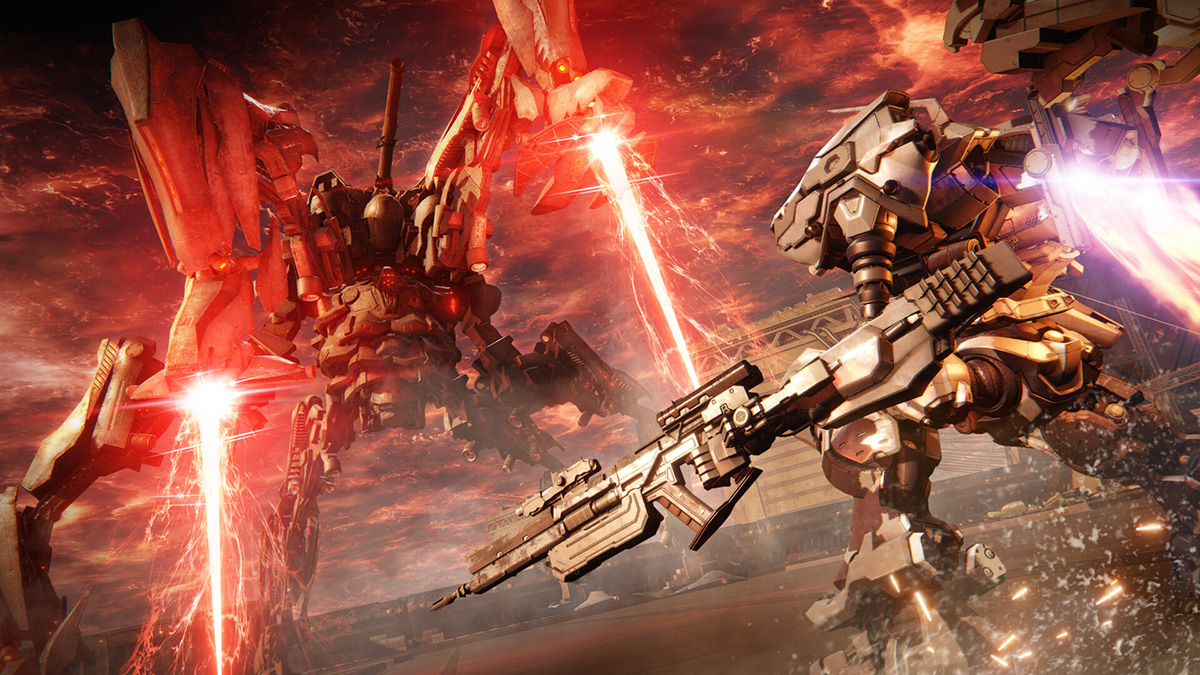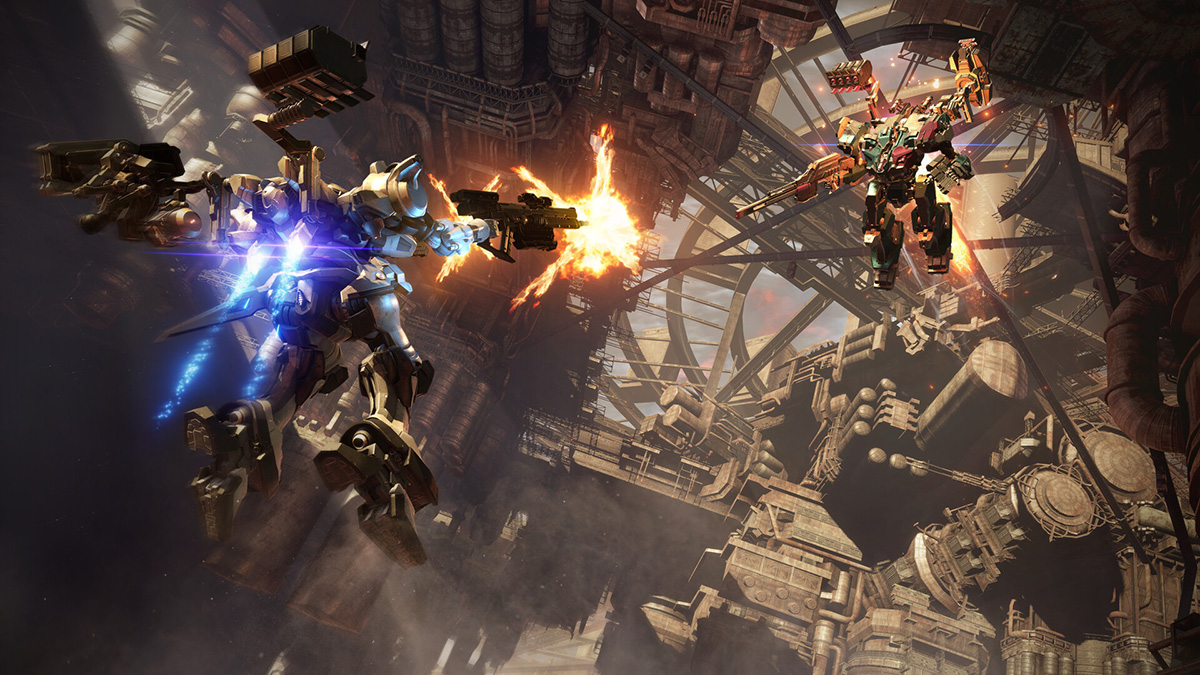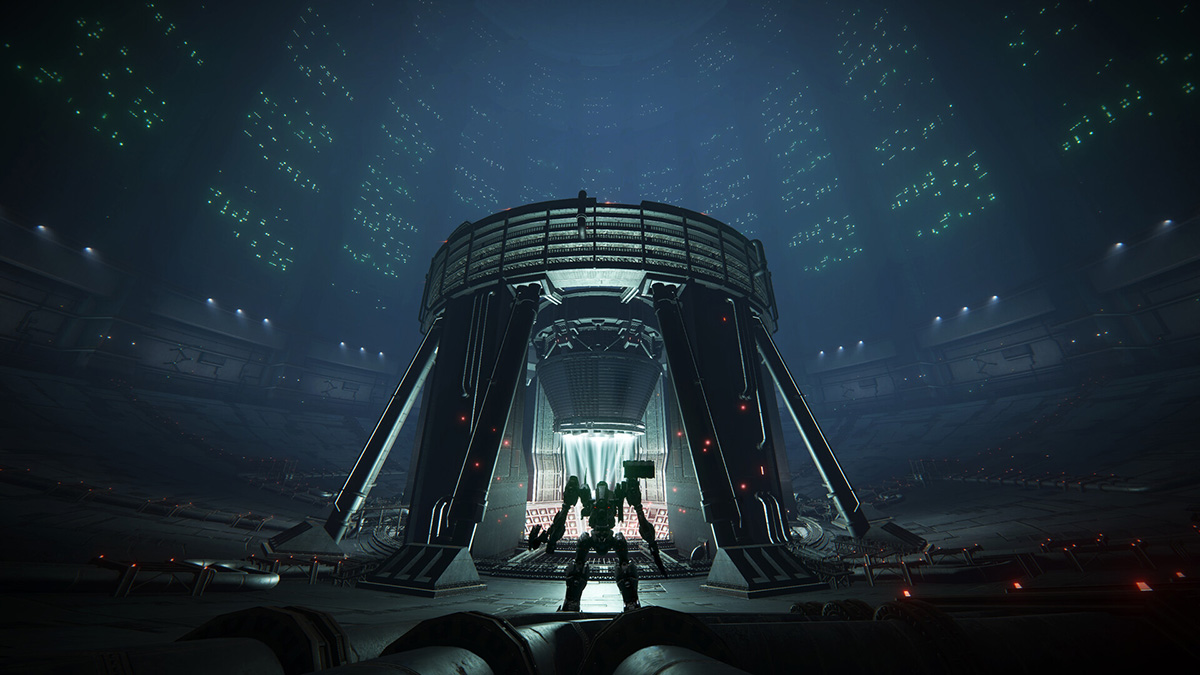The last Armored Core game came out more than 11 years ago. Armored Core 5, a multiplayer-focused title, was not particularly well-received at the time and looks even jankier today. In the intervening time, developer FromSoftware has put out some of the gaming industry’s greatest masterpieces in the majority of the Dark Souls series, Bloodborne, and Elden Ring. And a little game called Sekiro.
Armored Core 6: Fires of Rubicon is the team’s latest outing in a 25+ year franchise. It uses all the lessons learned while making a series of games that created an entire genre. And while it stays true to the central conceit of the AC franchise — its core, if you will — there’s one game that AC6 draws from more than others. And that’s Sekiro: Shadows Die Twice. I think it might be the best game they’ve made and whose mechanics I hope remain at the heart of From’s combat design in their latest entry of the mecha franchise.
Taking Armored Core 6 Higher
From the recent press events and announcements, we now know a few things about Armored Core 6 and how it leans into lessons learned throughout the Soulsborne series. The recent 13-minute gameplay showcases a few, and we also know that:
- Checkpoints within levels keep you from needing to repeat the whole mission again.
- Limited use of Repair Kits allows for an overall increase in difficulty.
- There are sprawling levels with multiple paths and ways to approach challenges.
However, unlike the Souls games, Armored Core 6 is mission-based. There’s less emphasis on exploration. While there’s customization, it follows the customization style of the classic AC games, like Armored Core 2 and Armored Core 3. There’s lots to do, but not so much as to be overwhelming. But one thing that stands out is level design.
Armored Core 6 takes two important cues from Sekiro. One of those is its focus on vertical level design. Even in Elden Ring, which has plenty of high and low spaces, you weren’t almost always moving up and down. Exploration there involves moving on a relatively flat surface interspersed with spirit springs and long descents. Traversing the world of Sekiro is a constant push and pull between going up and down, side to side, and everywhere in between.
The same is true in AC6. Mobility in every direction is paramount to your success. Your mech is built with it in mind. The levels also have catapults, springboards, and other methods of getting around, pushing you to experiment with your mech’s capabilities and the tools you find out in the field.
Staggeringly Huge

There are also Sekiro influences in Armored Core 6‘s gameplay — and for good reason. The game’s director, Masaru Yamamura, was Sekiro‘s main combat designer, and his design philosophy is infused into the systems of AC6. The most obvious is the Stagger mechanic. It’s a bit more familiar this time around, though. It uses a similar framework to what you might find in a game like Final Fantasy XVI, where causing Stagger increases the damage you deal.
The caveat is Stagger in Armored Core 6 decays, forcing you to stay on the offensive to break it. And, more importantly, you have a Stagger meter as well. If you play your cards wrong, you’ll suddenly take increased damage. And like Sekiro, the enemies and bosses in AC6 can deal much more Stagger much more quickly than you can. Not only do you need to be aggressive, you need to be smart.
Things Will be Difficult
From what I understand, Armored Core 6 is also built to be difficult. It will test not only the skills of newcomers but also grizzled veterans, too. That tracks with its Sekiro influences, where the core design philosophy made it inherently more challenging than any other Soulsborne. Where in the Souls games, Bloodborne, and Elden Ring, you can grind levels if you hit a wall —and then overpower your enemies — perhaps not so here.
In Sekiro, your attack rating is tied to how many story bosses you defeat. And health upgrades are location bound. If you can’t beat the boss blocking your way, you have two recourses: master the fight or turn the game off. It’s the “git gud” mentality built into game design. And it’s great not because it doesn’t respect your skills but because it does respect them. So long as you learn a boss’s tells, their deflect timings, and use the tools at your disposal.
It seems like Armored Core 6 is taking a similar tact while reaching something of a middle ground. You won’t be able to progress the story until you beat a mission. However, you can repeat missions infinitely for money. You won’t unlock new gear, so your loadout won’t evolve much, but you don’t have to beat your head against something for hours without getting something out of it.
Speed Hiding Steel: The Sekiro Effect

Beyond its mechanical inspirations, Sekiro seems to inform much of the central aspects of Armored Core 6‘s combat. Case in point, it’s renewed — or almost entirely new to the series — focus on melee combat. The AC series has always had access to melee options, but they were exclusively a last-ditch choice, usable only when you’d run out of ammo.
Worse, in previous titles, they were so slow and energy-expensive. The later-game enemies and bosses were almost impossible to hit with anything up close, and the damage, while workable, paled in comparison to any projectile in your arsenal.
With Sekiro‘s designers heading development, that means two things. Melee is one of the best combat styles available in Armored Core 6 in terms of damage and Stagger buildup. It’s also fast and satisfying, both of which are traits lacking from every previous entry in the franchise. Sure, you won’t parry missiles or perform the other long-range attacks foes will use, but increased AC mobility and environmental freedom allow for increased aggression. That’s a key part of success in Armoerd Cored 6‘s combat, just as it was in Sekiro.
A Different Fail State
There are also checkpoints scattered throughout levels — think Bonfires or Sites of Grace. They don’t, however, seem to operate the same way. Progression is more even, and while missions may be longer, they offer additional challenges that might not be possible without them. Levels can also be longer, and the difficulty can ramp up significantly.
Player failure no longer means being booted back to the main menu because of a single mistake. Just don’t expect checkpoints to be plentiful, as you’ll need to learn how to fight, use your Repair Kits wisely, and adjust your strategy to succeed.
This give and take has been a central part of FromSoftware design since their earliest games. Every choice is a risk, and every move you make opens up the possibility of failure. But every failure is an opportunity to learn. And if Sekiro is one of the hearts of Armored Core 6, that’s truer in this latest entry than at any other time. I, for one, can’t wait, not just because I see a return to form for a series that played a huge role in my gaming history, but because it just looks fun. And I can’t ask for more than that.







Published: Aug 1, 2023 12:31 pm